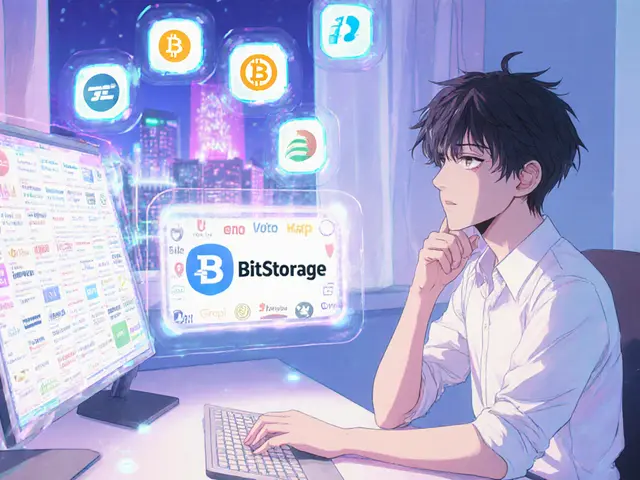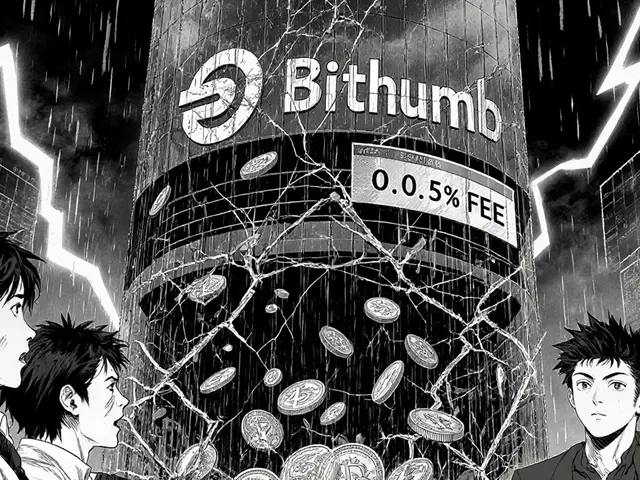Seamless (SEAM) Token Dashboard
Token Overview
Key Utilities
- Governance Yes
- Fee Discounts Yes
- Staking Rewards Yes
- Insurance Fund Yes
- Escrowed Version (esSEAM) Yes
Seamless vs. Aave Comparison
| Feature | Seamless Protocol | Aave |
|---|---|---|
| Blockchain | Base (Layer 2) | Ethereum, Polygon, Avalanche, others |
| Strategy Automation | Leverage Tokens bundle borrowing + supplying | Manual asset allocation (optional Aave V3 boost) |
| Governance Token | SEAM (fee discounts, staking, voting) | AAVE (risk parameters, asset listings) |
| Risk Management Partner | Gauntlet (continuous vault monitoring) | In-house risk module |
| Liquidity Model | Integrated markets via Morpho isolation | Isolated pools per asset |
| User Experience | One-click vault entry, passive yield | Requires manual supply/borrow decisions |
Token Distribution
- Community Incentives & Staking Rewards 30%
- Liquidity Mining & Vault Rewards 25%
- Team & Advisors (Vested) 15%
- Reserve for Future Development 20%
- Insurance Fund (Escrowed Fees) 10%
When you hear the buzz around Seamless SEAM token, you probably wonder whether it’s another meme coin or a real piece of the DeFi puzzle. The short answer: SEAM is the native token of the Seamless Protocol, a non‑custodial lending platform built on the Base blockchain. It combines governance, fee discounts, staking rewards, and an insurance fund into a single utility token, while the protocol wraps complex yield strategies into easy‑to‑use ERC‑20 Leverage Tokens (LTs). Below, we break down what SEAM is, how the protocol works, why it matters, and what you should watch out for before diving in.
What is Seamless (SEAM) - The Core Entity
Seamless (SEAM) is an ERC‑20 token that serves as the governance and utility layer of the Seamless Protocol. With a fixed supply of 100million tokens, SEAM is distributed across ecosystem incentives, team allocations, and a community reserve. Holders can vote on protocol upgrades, earn lower fees on the platform, stake to receive rewards, and contribute to the insurance fund that backs the lending markets.
The Seamless Protocol Explained
The protocol lives exclusively on Base, the Layer2 solution launched by Coinbase. By focusing on a single chain, Seamless avoids the cross‑chain complexities that plague multi‑chain lenders like Aave. Built on top of the Morpho stack, the protocol accesses isolated lending markets, which reduces capital inefficiency and improves yield.
At its heart are Leverage Tokens (LTs), standard ERC‑20 tokens that represent a bundled yield strategy. Instead of manually moving assets between borrowing and supplying layers, users simply buy an LT, and the protocol handles the rest. The LTs can be used as collateral, traded on DEXs, or dropped into other DeFi apps, making them truly composable.
Key Utilities of the SEAM Token
- Governance: SEAM holders vote on proposals ranging from fee adjustments to new vault launches. Voting power can be self‑delegated or delegated to another address.
- Fee Discounts: Active users receive a tiered discount on protocol fees, which can be significant for high‑volume lenders.
- Staking Rewards: Liquidity providers who stake SEAM in the protocol’s reward pool earn additional SEAM and MORPHO tokens.
- Insurance Fund Contribution: A portion of every fee goes into an escrowed pool that backs the platform against extreme market events.
There is also an escrowed version called esSEAM. esSEAM mirrors the utilities of regular SEAM but cannot be transferred while escrowed, encouraging long‑term engagement.

How to Start Using Seamless
- Set up a wallet that supports the Base network (e.g., MetaMask with Base RPC).
- Acquire SEAM or the desired Leverage Token on a Base‑compatible DEX.
- Deposit the token into a Seamless Vault. The vault automatically allocates assets to the best‑yielding Morpho market.
- If you hold SEAM, consider staking it in the reward pool to earn extra tokens.
- Participate in governance by visiting the protocol’s voting dashboard and casting your vote on active proposals.
All steps are performed through a non‑custodial UI, meaning you keep full control of your private keys.
Seamless vs. Traditional DeFi Lenders (Aave Example)
| Feature | Seamless Protocol | Aave |
|---|---|---|
| Blockchain | Base (Layer2) | Ethereum, Polygon, Avalanche, others |
| Strategy Automation | Leverage Tokens bundle borrowing + supplying | Manual asset allocation (optional Aave V3 boost) |
| Governance Token | SEAM (fee discounts, staking, voting) | AAVE (risk parameters, asset listings) |
| Risk Management Partner | Gauntlet (continuous vault monitoring) | In‑house risk module |
| Liquidity Model | Integrated markets via Morpho isolation | Isolated pools per asset |
| User Experience | One‑click vault entry, passive yield | Requires manual supply/borrow decisions |
The table shows that Seamless focuses on simplifying yield automation and operates on a single, fast Layer2, while Aave offers broader chain support but expects users to manage positions more actively.
Tokenomics and Current Market Snapshot (Oct2025)
As of October2025, SEAM trades around $0.40 with a 24‑hour volume exceeding $1.5million. Circulating supply sits at roughly 39million, putting the market cap near $15.6million. The price has been volatile-up 10% in the past week but down 5% over the last month-mirroring broader crypto trends.
Token distribution breaks down as follows:
- Community incentives & staking rewards: 30%
- Liquidity mining & vault rewards: 25%
- Team & advisors (vested): 15%
- Reserve for future development: 20%
- Insurance fund (escrowed fees): 10%
The fixed supply ensures no inflation beyond the initial allocation, while the escrowed fee model continually feeds the insurance fund, helping to safeguard borrowers during market crashes.
Risk Factors to Keep in Mind
- Smart‑contract risk: Although audited by reputable firms, any code bug could expose funds.
- Base network risk: As a newer Layer2, Base’s future adoption and security posture are still evolving.
- Liquidity risk: Leverage Tokens rely on underlying market depth; rapid withdrawals could affect vault performance.
- Governance concentration: Early large SEAM holders could sway proposals if voting power isn’t sufficiently decentralized.
Mitigation steps include over‑collateralization, tiered liquidation mechanisms, and ongoing audits by firms like CertiK.
Future Outlook and Development Roadmap
Seamless is actively expanding its vault catalog, adding blue‑chip assets such as ETH, USDC, and wstETH. Partnerships with Gauntlet ensure professional risk monitoring, while deeper integration with the Morpho stack promises lower capital overhead and higher yields.
Analysts project SEAM price to hover around $0.41 in 2025, with bullish scenarios reaching $0.44 if Base adoption accelerates. Long‑term forecasts (2030) suggest potential growth to $2.70, yet these numbers carry high uncertainty due to crypto market volatility.
Key upcoming milestones include:
- Launch of cross‑chain bridge to enable SEAM movement between Base and Ethereum.
- Introduction of “Dynamic Vaults” that auto‑adjust leverage ratios based on market conditions.
- Community‑driven governance upgrades allowing weighted voting for long‑term token holders.
How to Evaluate Seamless for Your Portfolio
Use the following checklist to decide whether SEAM fits your strategy:
- Exposure preference: Want passive yield with minimal management? Seamless excels.
- Risk tolerance: Accept over‑collateralization and smart‑contract risk?
- Chain commitment: Comfortable staying on Base rather than hopping across chains?
- Governance interest: Ready to vote on proposals and possibly stake SEAM for extra rewards?
If you tick most boxes, allocating a modest portion of your DeFi budget to SEAM and its Leverage Tokens can provide diversified, automated yield.
Frequently Asked Questions
What is the primary purpose of the SEAM token?
SEAM powers governance, offers fee discounts, distributes staking rewards, and supports the protocol’s insurance fund, making it the utility backbone of the Seamless ecosystem.
Do I need to hold SEAM to use the vaults?
No. Anyone can deposit assets into a vault, but holding SEAM unlocks fee reductions and additional reward streams.
How does a Leverage Token differ from a regular ERC‑20?
A Leverage Token bundles a borrow‑and‑supply strategy into one ERC‑20 token. Its price reflects the underlying yield and risk, letting users gain exposure with a single asset.
Is SEAM listed on major exchanges?
SEAM is available on Base‑compatible DEXs like Uniswap v4 (Base) and on several centralized exchanges that support Base tokens.
What are the main security measures in the protocol?
The protocol enforces over‑collateralization, tiered liquidations, regular third‑party audits, and an escrowed insurance fund managed by Gauntlet.







Alex Gatti
November 16, 2024 AT 19:43SEAM looks kinda slick
Jim Griffiths
November 19, 2024 AT 17:10If you want a quick start, just set up a Base wallet, grab SEAM on a DEX, and deposit into a vault. The UI walks you through each step and you keep control of your keys.
Taylor Gibbs
November 22, 2024 AT 14:36Got to say the SEAM token feels like a nice bridge between govrnance and actual yield. It’s not just hype, there’s real staking rewards and fee cuts that can add up over time.
Bhagwat Sen
November 25, 2024 AT 12:03What really excites me about Seamless is how it bundles borrowing and supplying into one token. You don’t have to juggle multiple positions – just buy the Leverage Token and the protocol does the heavy lifting. It’s built on Base, so transactions are cheap and fast, which matters when you’re moving money around a lot. The insurance fund backed by escrowed fees gives an extra safety net that many other protocols lack. Plus the partnership with Gauntlet means risk is monitored continuously, not left to guesswork. Overall it feels like a solid step forward for passive DeFi yields.
Cathy Ruff
November 28, 2024 AT 09:30Honestly SEAM is just another token trying to cash in on the DeFi craze no real innovation here
Amy Harrison
December 1, 2024 AT 06:56Love the vibe of Seamless! 😊 The one‑click vault entry is exactly what I needed to get into yield farming without the headache. Keep the updates coming! 🚀
mukesh chy
December 4, 2024 AT 04:23Oh great another “automated” yield token – because we all know automation never bugs out. Just wait for the next smart‑contract fiasco.
Marc Addington
December 7, 2024 AT 01:50US investors should steer clear until the SEC gives a clear green light. No one wants another regulatory mess on their portfolio.
Amal Al.
December 9, 2024 AT 23:16Great tip on the wallet setup! Adding to that, using a hardware wallet with Base support adds an extra layer of security, especially when you’re staking SEAM for rewards.
Katherine Sparks
December 12, 2024 AT 20:43Indeed, the partnership with Gauntlet is a noteworthy aspect; their continuous vault monitoring helps mitigate systemic risks. Moreover, the escrowed fee model ensures the insurance fund remains adequately capitalized, providing a safety net during market turbulence. Users should also consider the over‑collateralization ratios, which are designed to protect lenders while still offering competitive yields. Lastly, the integration with the Morpho stack contributes to lower capital overhead, enhancing overall efficiency.
stephanie lauman
December 15, 2024 AT 18:10When you delve into the SEAM tokenomics, a pattern emerges that many overlook: the distribution heavily favors early insiders, creating an inherent centralization risk. The 30% allocated to community incentives looks generous, yet it is gated behind complex vault participation requirements that deter casual investors. Moreover, the insurance fund, while theoretically protective, is funded solely by escrowed fees-a revenue stream that can evaporate in a prolonged bear market. Smart‑contract audits, albeit performed by reputable firms, cannot guarantee immunity from zero‑day exploits, especially given the rapid iteration cycles of DeFi protocols. Base, as a Layer‑2 solution, still grapples with limited node diversity, making it a potential single point of failure if a major outage occurs. Governance proposals, despite being open to all SEAM holders, often require a quorum that only the top whales can meet, effectively marginalizing smaller token holders. The leveraging mechanism of the Leverage Tokens compounds exposure; a sudden market correction could trigger cascading liquidations across multiple vaults, amplifying losses beyond initial positions. Additionally, the reliance on Gauntlet for risk monitoring introduces a third‑party dependency that, if compromised, could produce inaccurate risk assessments. The token’s price volatility, evidenced by a 10% weekly swing, suggests speculative trading dominates over genuine utility uptake. Cross‑chain bridge plans, while promising, add another attack surface, as bridging mechanisms have historically been exploited. The vesting schedule for the team’s 15% allocation could also lead to sudden token supply inflation once cliffs are met, pressuring market price downward. In sum, while SEAM markets itself as a seamless entry point into automated yield, the underlying architecture harbors multiple vectors of systemic risk that prudent investors should scrutinize meticulously.
Shaian Rawlins
December 18, 2024 AT 15:36I hear you on the centralization concerns, but let’s also acknowledge that the protocol’s automation does lower the barrier for many newcomers who would otherwise shy away from DeFi complexity. The insurance fund, despite its reliance on escrowed fees, has successfully covered minor liquidation events so far, which indicates a functional safety net. While Base’s node diversity is still growing, its backing by Coinbase provides a level of infrastructure stability that many other L2s lack. It’s also worth noting that the governance model is still evolving, and proposals to lower quorum thresholds are already in discussion-showing a community-aware approach to decentralization. On the bridge front, the team has pledged third‑party audits before launch, a practice that mitigates typical bridge vulnerabilities. All things considered, the risks exist, but they are not unique to SEAM; they reflect broader DeFi challenges that the industry as a whole is working to solve.
Rob Watts
December 21, 2024 AT 13:03Stay focused and keep stacking those SEAM rewards – the compounding effect pays off!
Miranda Co
December 24, 2024 AT 10:30Don't forget to watch the fee discount tiers – they're the real game‑changer if you want to maximize returns.